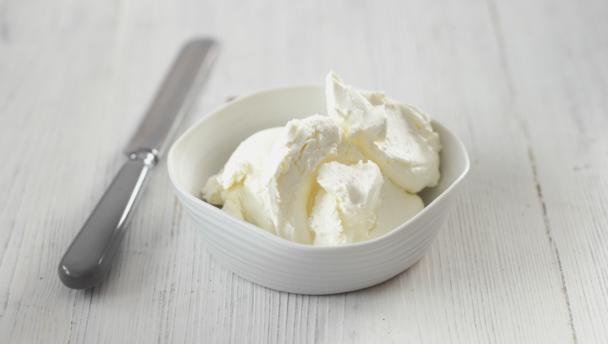

Cream cheese is made from a mixture of cream and milk, and eaten fresh. It has a soft, spreadable texture, and mildly acidic flavour that is often flavoured with garlic, herbs or black pepper. Most mass-produced versions are pasteurised.
In Britain, cream cheese must have a fat content of 45-65% (anything above this is considered double cream cheese), although definitions vary abroad.
 Fish cakes with sweet potato fries
Fish cakes with sweet potato fries
 Norwegian fish pie
Norwegian fish pie
 The perfect baked potato
The perfect baked potato
 Buckwheat pancakes with smoked salmon and citrus cream cheese
Buckwheat pancakes with smoked salmon and citrus cream cheese
 Baked courgette fritters with marinara sauce
Baked courgette fritters with marinara sauce
 Baked Welsh cake cheesecake
Baked Welsh cake cheesecake
 Chocolate peanut butter cheesecake
Chocolate peanut butter cheesecake
 Simnel cake cupcakes
Simnel cake cupcakes
 Celebration chocolate cake
Celebration chocolate cake
 Marmalade and almond cake
Marmalade and almond cake
 Classic carrot cake
Classic carrot cake
There are many varieties of cream cheese available. Look for young cheeses with a far-off use-by date.
Cream cheeses are designed to be eaten as fresh as possible. Eat 3-4 days after opening. Cream cheese doesn’t freeze well.
Cream cheese’s creamy character makes it popular for use in cooking: it’s used both in savoury dishes and sweet cheesecakes and icings.
Soya-based cream cheeses can be used as a dairy-free alternative to milk-based cream cheeses in most recipes.
Article by Felicity Cloake
Type the ingredients you want to use, then click Go. For better results you can use quotation marks around phrases (e.g. "chicken breast"). Alternatively you can search by chef, programme, cuisine, diet, or dish (e.g. Lasagne).